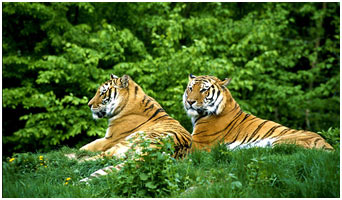Fauna of Asia
Asia stretches from the frozen arctic in the north to the warm tropics in the south. Although much of Asia is an undulating plain, it likewise boasts the remarkable mountain range of the Himalayas, much of the interior gets little rain, however, parts of the Indian Subcontinent hold the world record for yearly rains. This continent of contrasts offers many habitats, each with its own characteristic plants and animals.
All the animals living in Asia and its surrounding seas and islands are considered the fauna of Asia. Asia has a few of the most diverse and unique wildlife types belonging to any of the world’s continents. But while a few of these species have populations that are flourishing, others are endangered, facing numerous dangers that threaten them to wipe off from the Earth. Here are the few wild animals of Asia which are of excellent interest.
1.Asian Elephant
The Asian elephant is the biggest of the continent’s terrestrial mammals, however, smaller sized than its African brother or sister. The Indian, Sumatran, and Sri Lankan are the 3 subspecies of Asian Elephants. It can weigh as much as 11,000 pounds, reach a length of 21 feet (6.4 meters), and stand 11.5 feet (3.5 meters) tall. Its skin is dark grey to brown, with pink patches on the forehead, ears, chest, and the base of the trunk.
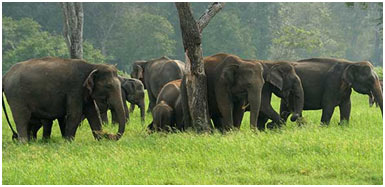
The Asian elephant has one finger on the upper lip of the trunk, unlike the African types with a second one on the lower lip. This mild giant’s populations are spread in the Eastern Himalayas and Greater Mekong regions in nations like India, Sri Lanka, Bhutan, Nepal, Myanmar, Cambodia, Laos, Thailand, and Vietnam. These nations have tropical and subtropical, damp and dry broad-leaf forests suited to sustain the Asian elephant.
2.Bengal tigers
Among the most marvelous and renowned animals to walk the Earth, Bengal tigers are magnificent and rare. They’re also one of the greatest cat species on the planet. Typically, Bengals are larger than other tiger types, however, the largest tiger ever recorded was a Siberian. As such, Bengals are thought about as the second biggest tiger species.
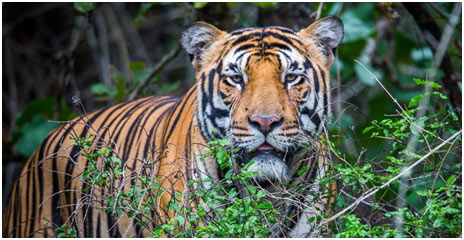
Today, wild Bengal tigers just live in Bangladesh, Bhutan, Pakistan, India, and Nepal. And while there are more Bengals than any other tiger subspecies on the Indian subcontinent, the populations are endangered. Conservation efforts are working to some degree; however, they’re not outpacing the poaching, logging, and human advancement that has actually ravaged wild tiger habitats over the past 50 years.
3.Asiatic Black Bear
The Asiatic Black Bear is a medium to the large-sized type of bear that is found populating the deciduous tropical forest throughout Asia. Understood to be carefully related to the American Black Bear, the two species exhibit a number of similarities including their size, look, and behavior, and are thought to have in fact shared a common forefather some 4 million years back.
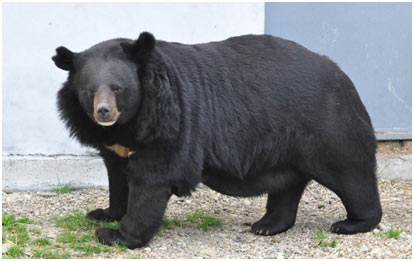
Unlike the American Black Bear, however, which is showing increases in population numbers especially in particular locations, the Asiatic Black Bear is considered to be a threatened species throughout its native range today as populations have decreased dramatically due to both loss of their natural environments to logging and the truth, they are the most prized of all bear types that are searched for their body parts (primarily the gall bladder).
4.Giant Panda
The Giant Panda is an omnivore native to south-central China and a member of the bear family of animals. It lives in an environment of temperate broad-leaf forest or mixed forest, where it forages for bamboo. The giant panda’s thick and woolly fur coat is black and white, and when totally grow it weighs approximately 330 pounds. From the nose to rump its length is 5 feet (1.5 meters) usually and has a little 5-inch (15 cm) tail.
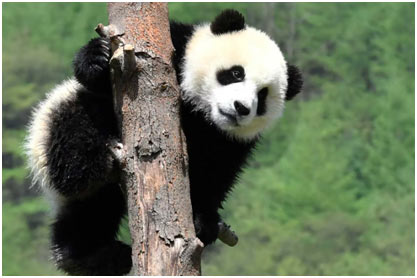
Bamboo leaves, stems, and shoots are the main diet of the giant panda; however, it likewise feeds upon meat from birds and little rodents. The IUCN categorizes the giant panda as a vulnerable species, formerly classifying it as threatened, whose environment over the years has been encroached on due to agriculture and logging. There are about 1864 giant pandas left in the wild, and thankfully, their numbers are increasing. In captivity, pandas can live up to 30 years old.
5.Japanese Emperor Butterfly
Only the male Japanese emperor has a rainbowlike purple sheen, but both sexes have spotted wings. This pattern separates their outline, making it challenging to see where they land on sun-flecked foliage. Their caterpillars are leaf green, to camouflage them on the leaves of Celtis trees on which they feed.
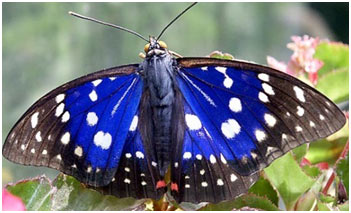
6.Tawny Eagle
The tawny eagle nests in shrubs and trees by watercourses. It flies far away over steppes and semi-arid deserts looking for food. The tawny eagle is a skillful hunter.
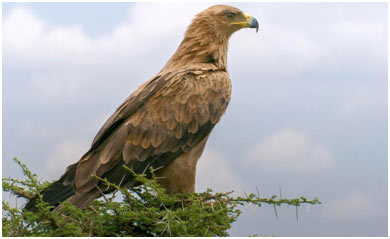
However, it increases its opportunities of getting adequate food by feeding upon carrion and stealing other predator’s prey.
7.Cobra
The Indian Cobra is a poisonous snake belonging to the Middle East, Pakistan, India, China, Bangladesh, and Indonesia in their tropical environments. At full maturity, this reptile can grow to be 6 to over 7 feet (1.8 to 2.22 meters) long. Its body color varies from cream-white, brown, to black, and others have half-ring patterns on the back of the neck.

The Indian cobra lives anywhere it discovers shelter, even in human settlements. When threatened it hisses, sways its hood to appear bigger and appear aggressive, and bites or spits venom.
8.Lesser Bird-of-Paradise
The Lesser Bird-of-Paradise is found in pacific countries like Papua New Guinea, eastern Australia, and Southeast Asia, generally Indonesia. In these areas, lowland and tropical jungles, and overload forests are their habitats. This bird is among about 40 Bird-of-Paradise types.
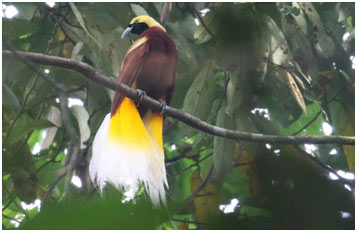
The lesser bird-of-paradise is 12.5 inches (32 cm) long, tail wires not consisted of. The male weighs in between 6.5 to 10.5 oz (183-300 g), and females 5 to 7.5 oz (141-210 g). The lesser bird of paradise plumage is extremely brilliant and colorful, with black, white, grey, green, brown, blue, yellow, and red.
9.Camels
The Camel (likewise known as the Dromedary Camel, the Arabian Camel, and the One-Humped Camel) is a large hoofed animal that is most commonly found in the hot deserts of Northern Africa, Pakistan, and Indian deserts, and the Middle East.

The Camel is among the most unique mammals on earth and has adjusted completely to life in the desert where food and water can often be limited, and the temperature level changes rapidly from the scorching-hot days to the cooler nights. However, although they would have once been found freely roaming the Arabian deserts, they are today extinct from the wild but the domestic population is widespread and various.
10.Malayan Tapir
The Malayan Tapir is a threatened mammal in the tapir family, belonging to southern Thailand, southern Myanmar, the Malayan Peninsula, and the southern and central parts of Sumatra in Indonesia. It looks a bit like a cross in between a pig or an anteater with its distinctive snout whose upper lip curves and hangs over the lower lip.
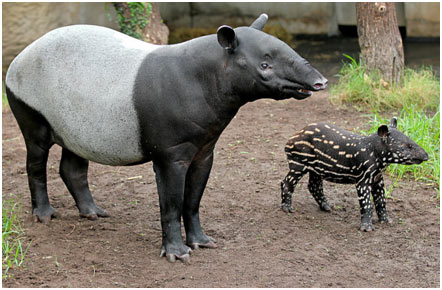
Usually at least 6 feet long and weighing up to roughly 720 pounds, it’s the biggest of the 4 Tapir species. There are about 2,000 of these species remaining, and their population is decreasing. This is due to environmental loss from illegal logging, and hunting.

